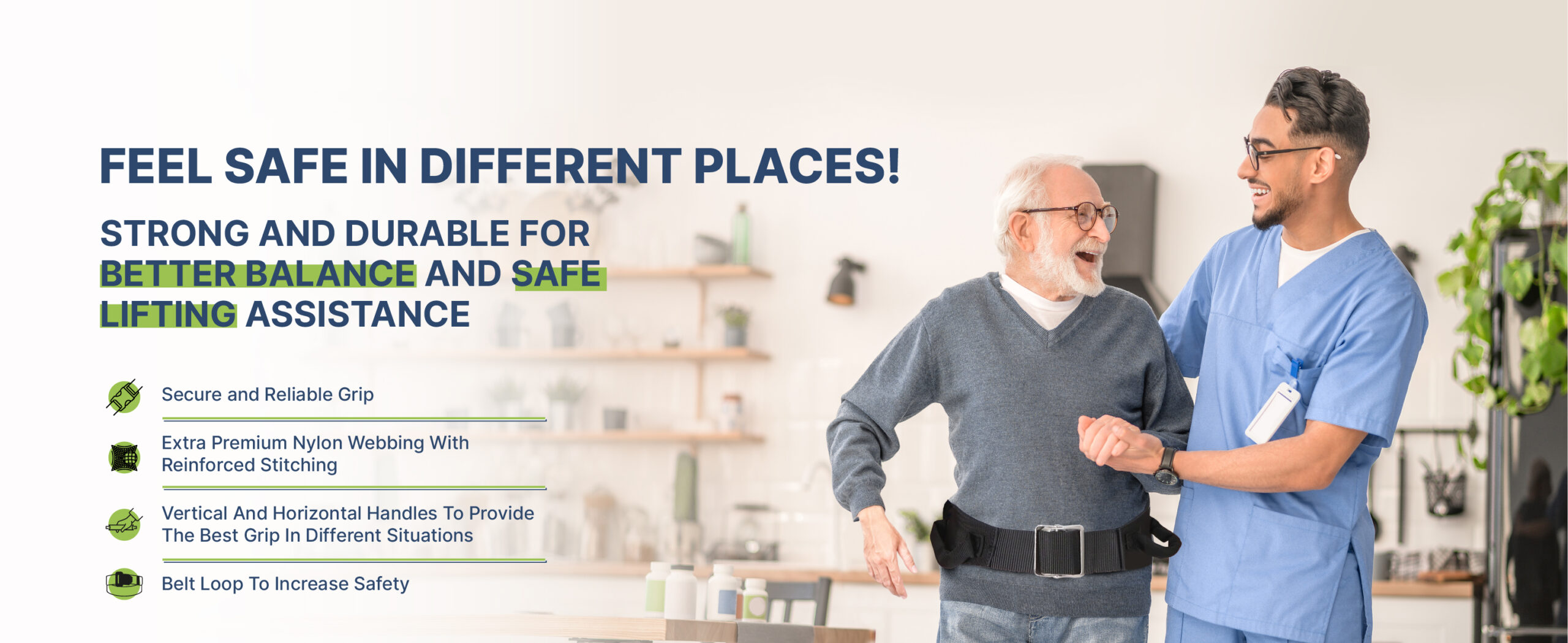
|
|
|
|
|
|---|---|---|---|
| The extra belt loop on our gait belt keeps the strap neatly in place, eliminating the loose end that can dangle and create potential tripping hazards. | If you have health problems due to Parkinson's, dementia, or after surgery, this is a must-have. It's the perfect stroke therapy equipment for adults. | Designed for maximum durability and strength, metal buckle belts provide a secure and reliable grip, reducing the risk of slippage during transfers. | This transfer belt for lifting seniors is made with strong nylon webbing, stitching has been enhanced for long durability and handles are reinforced |
HOW TO USE SIMPLY SENIORS' GAIT BELT WITH 7 HANDLES
Thread the strap into the buckle from behind, so that the emerging strap is pointing away from the patient's body. Keep feeding the strap through the loop and over the teeth until the belt is secured but not yet snug around the patient's body. |
|
|
|
STEP 2: SLIDE THE BUCKLE LEFT OR RIGHT OF THE CENTER OF THE PATIENT'S BELLY
If the buckle is centered right over the patient's belly button, it's more likely to cause discomfort or even pain when you tighten it. Instead, move the buckle to one side or the other so that it's halfway between the belly button and hip bone. Ask the patient if they have a side preference—they may have a tender spot on one side of their abdomen, for instance. |
| STEP 3: FEED THE STRAP THROUGH THE OTHER BUCKLE LOOP AND PULL IT TIGHT
Thread the strap into the opposite loop (the one without teeth) from the front, so that it passes over the center of the buckle. Continue to feed it through the loop until the strap is fully tightened between the two buckle loops. |
|
|
|
STEP 4: PULL THE STRAP UNTIL THE BELT IS TIGHT BUT NOT PAINFUL
With the buckle moved to the side, pull on the free end of the strap to cinch the belt around the patient's abdomen. Make the belt tight enough that you can barely fit your fingers between the belt and the patient's clothing and body. If you can't feed your fingers beneath the belt strap, or if the patient says the belt hurts, it's too tight and should be loosened a bit. If you can pinch the fabric of the belt strap between your fingers, it's too loose and should be tightened. |
| STEP 5: PREPARE YOU FOR LIFTING THE PATIENT
Lock your hands on the handles of the gait belt. Stand as close as possible to the patient and reach around their chest with your hands. You can hold the gait belt between your hands and line up your arms with the belt to create friction. |
|
|
|
STEP 6: LIFTING THE PATIENT
Put one of your legs between the patient's legs, and the other one just to the side, so you can get very close to them. Tell the patient you are going to count to 3, and on 3 you are going to stand up and lift them. Count out loud, “1-2-3.” On “3,” slowly stand up, using your legs to lift the patient. YOU MUST NOT PULL STRAIGHT UP ON THE BELT BUT USE IT TO HELP DIRECT THE PATIENT FORWARD AND UP ON A DIAGONAL, FORMING A 45º ANGLE. |
56 reviews for Gait Belt for Seniors with 7 Handles – Transfer Gate Belts with Handles for Lifting Elderly & Patient Physical Therapy – Easy to Use Quick Release Gait Belt for Medical Nursing Use
You may also like…
-
Sale!
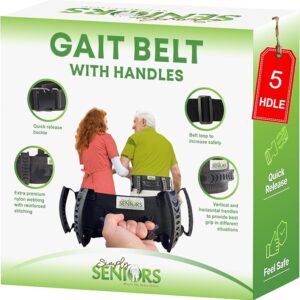
Gait Belt for Seniors – Transfer Gate Belts With Handles for Lifting Elderly & Patient Physical Therapy – Easy to Use Quick Release Gait Belt for Medical Nursing Use
Original price was: $24.95.$17.95Current price is: $17.95. -
Sale!
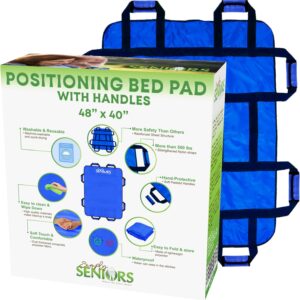
Positioning Bed Pad with Handles 48″ X 40″ – Reusable & Washable Draw Sheets for Home & Hospital Use – Essential Home Care Products & Medical Supplies for Elderly & Bed Ridden Patients
Original price was: $39.95.$31.95Current price is: $31.95. -
Sale!
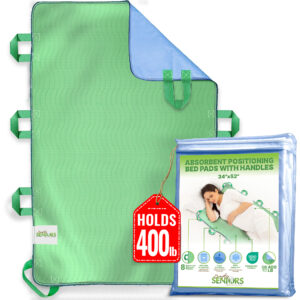
Absorbent Positioning Bed Pad with Handles 34″ X 52″- Washable, Waterproof Incontinence Bed Pads – Reusable Bed Mobility Under Pads to Aid Seniors, Disabled & Bedridden Patients – Fast-Drying
Original price was: $30.95.$24.95Current price is: $24.95.
Best Selling Products


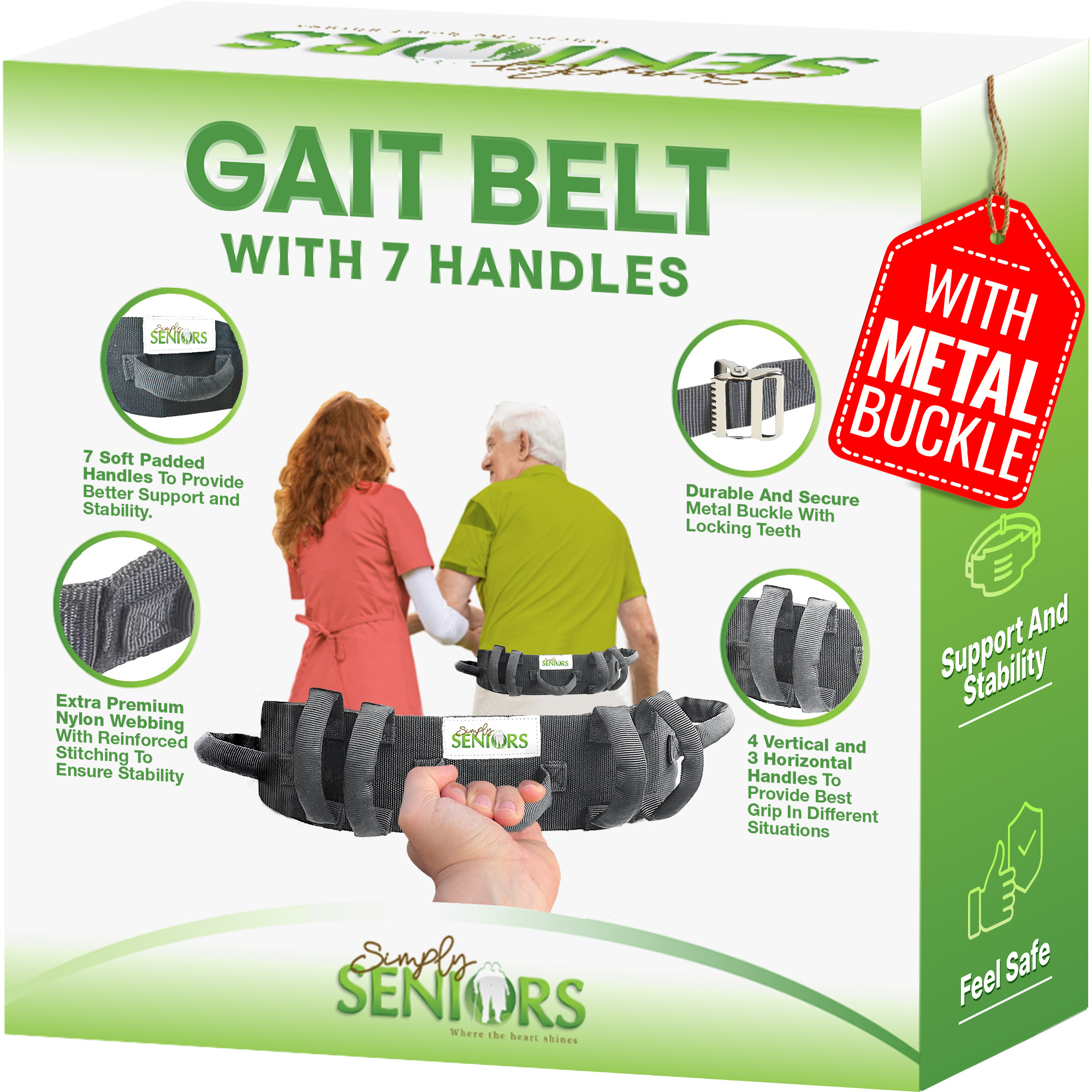
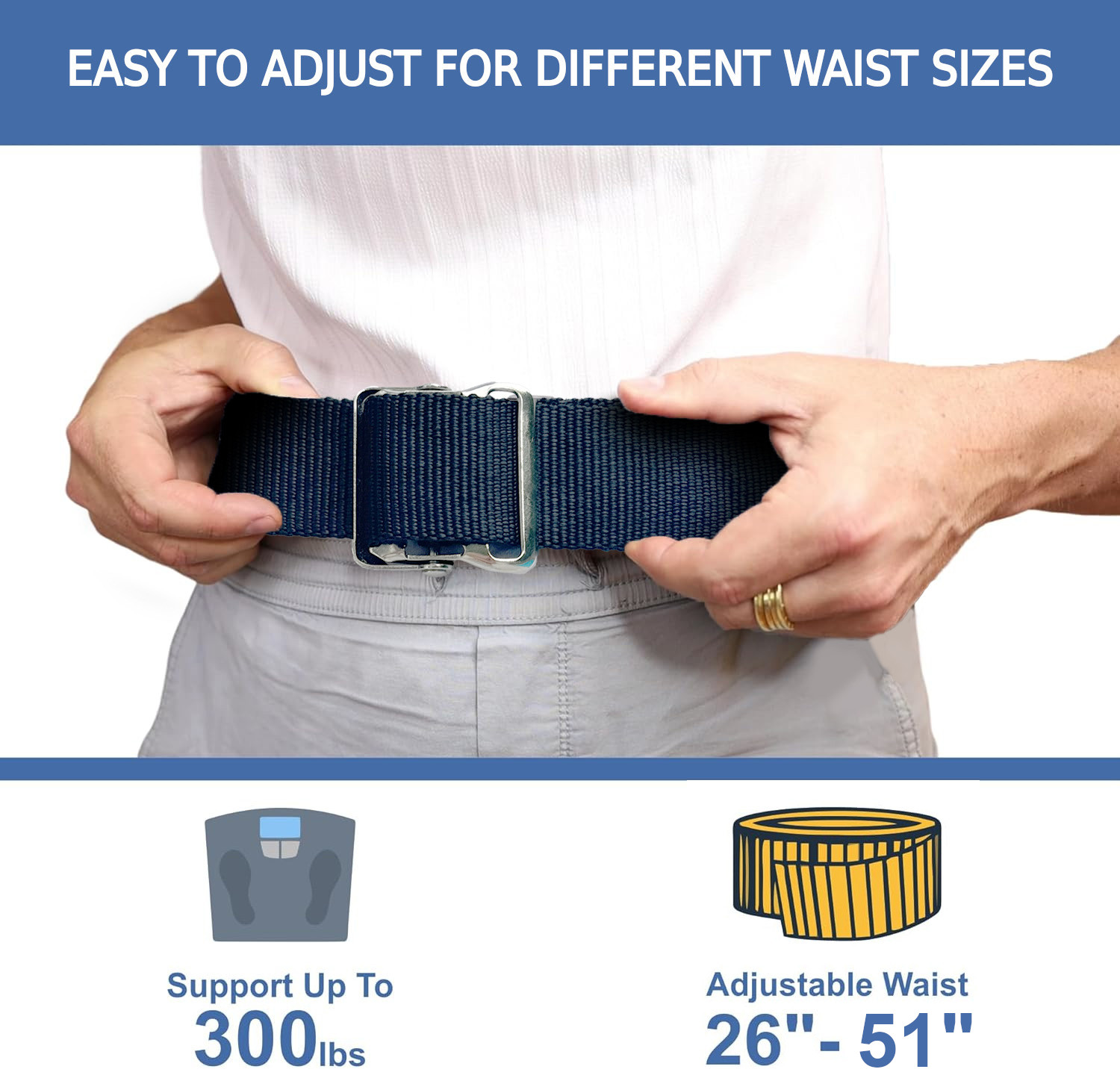
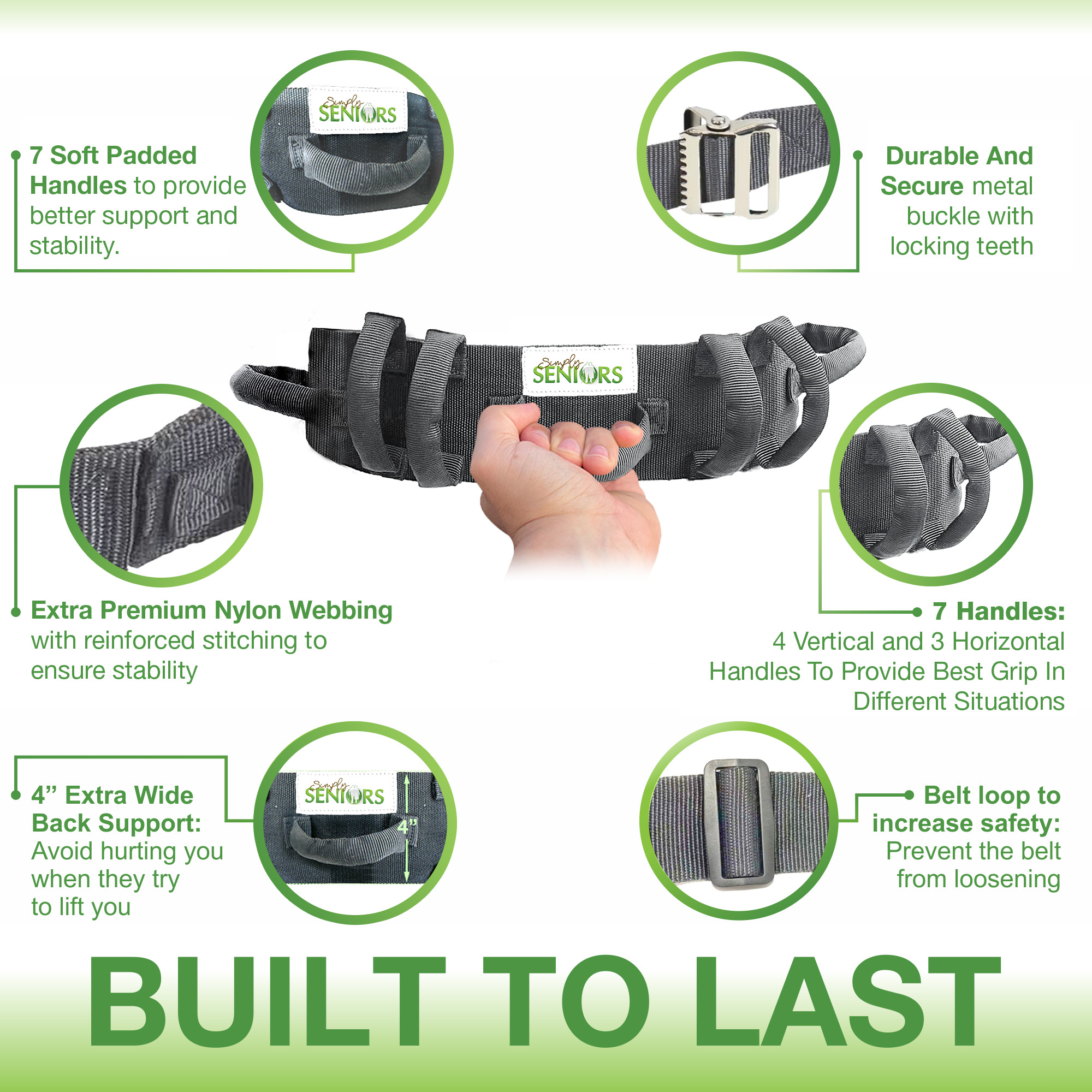
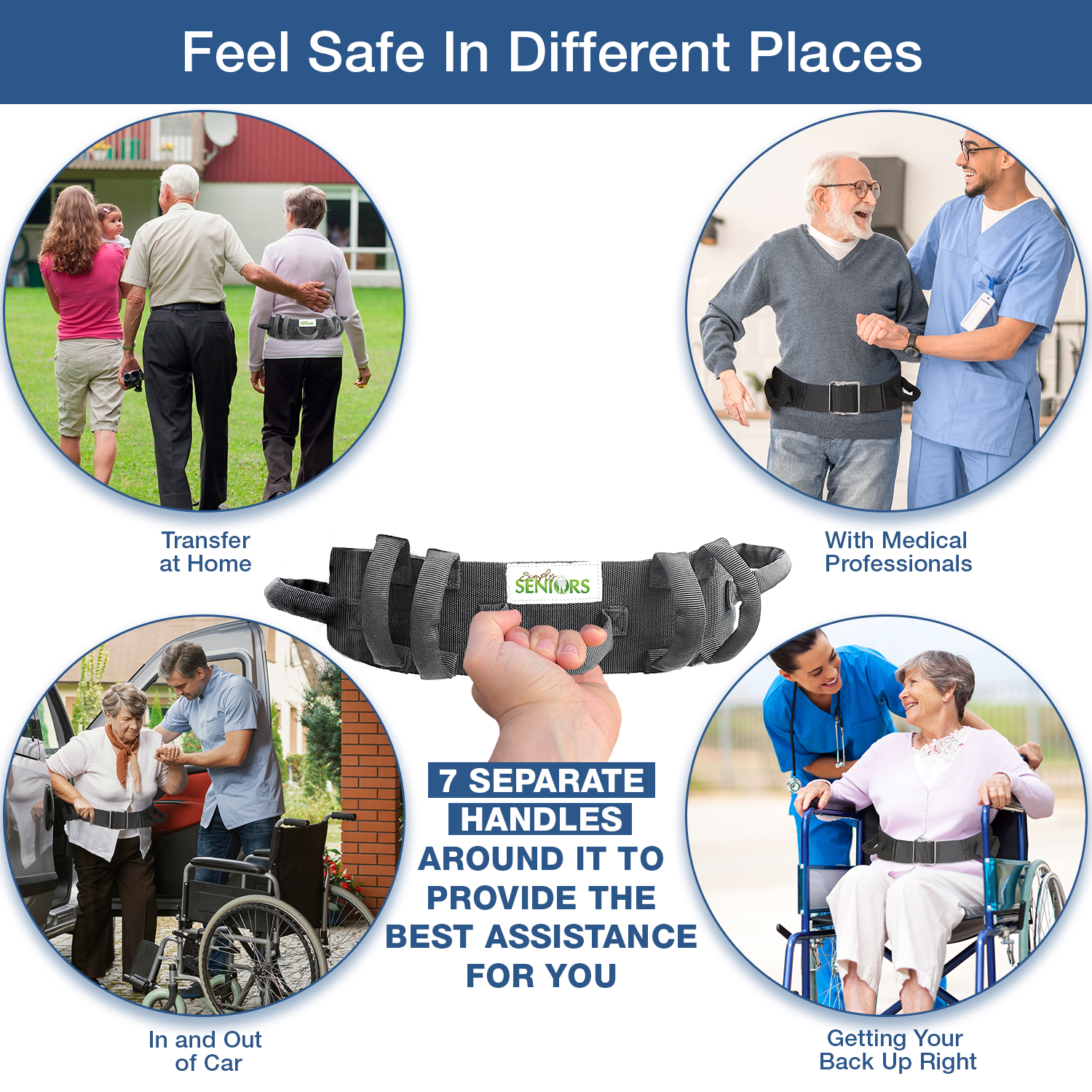
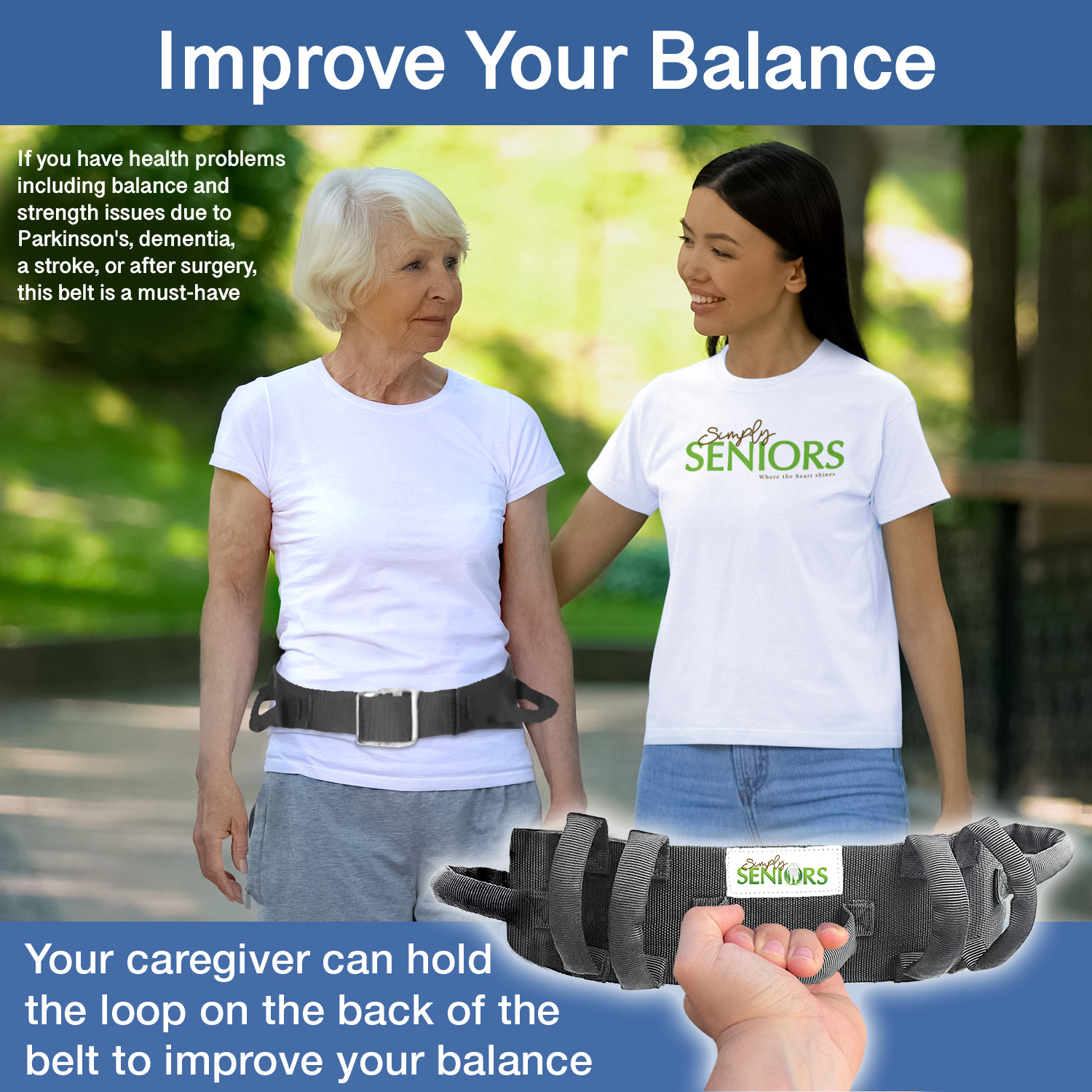
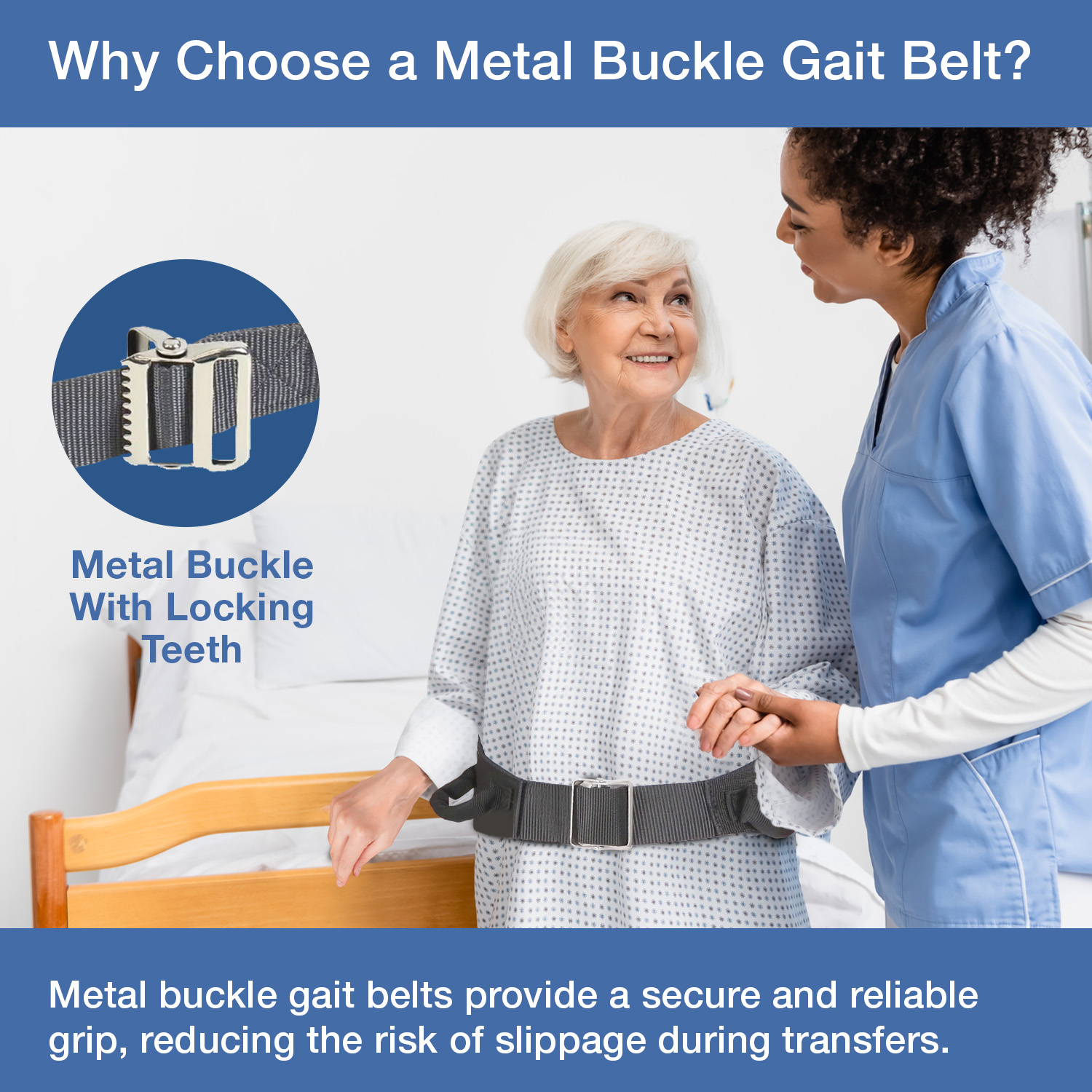
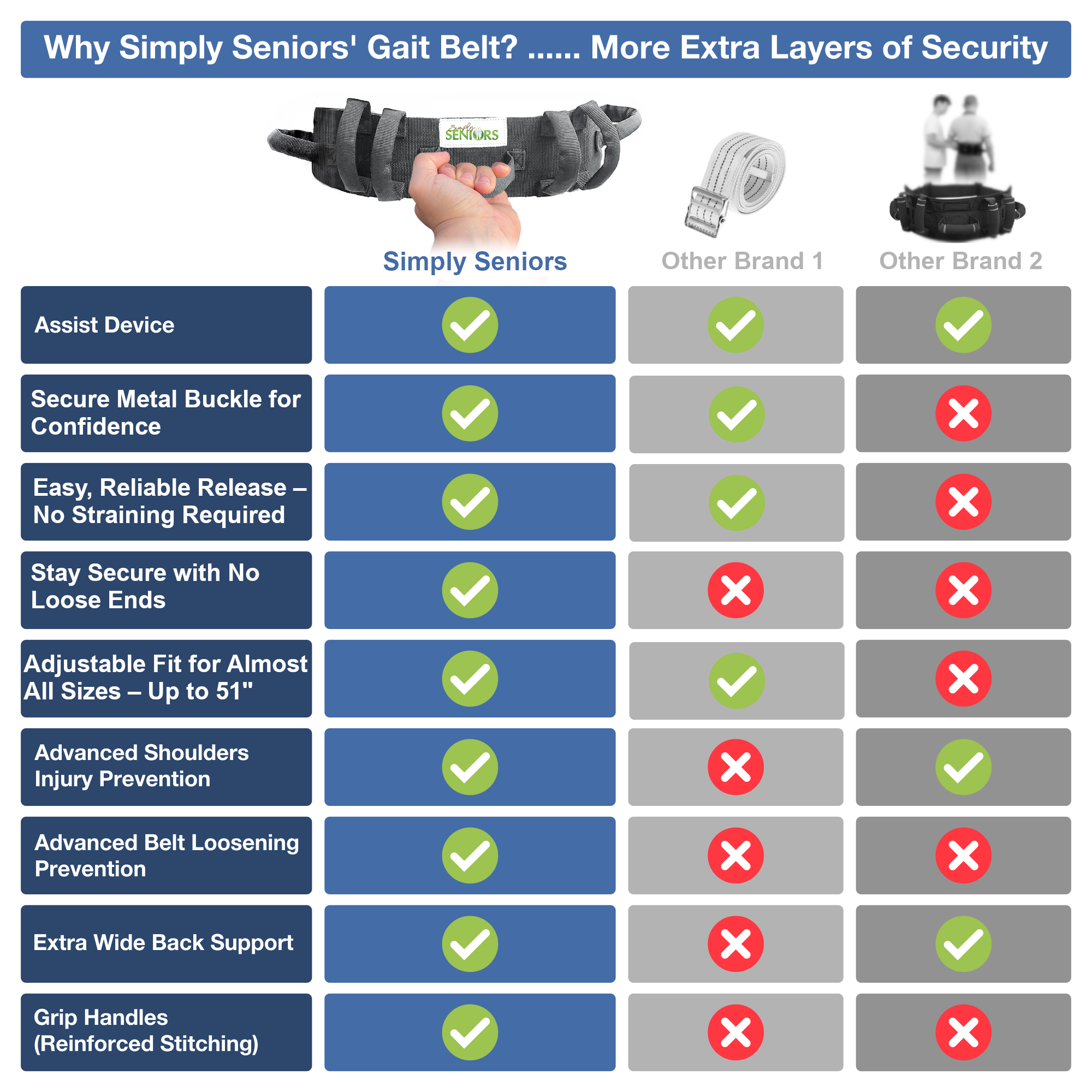
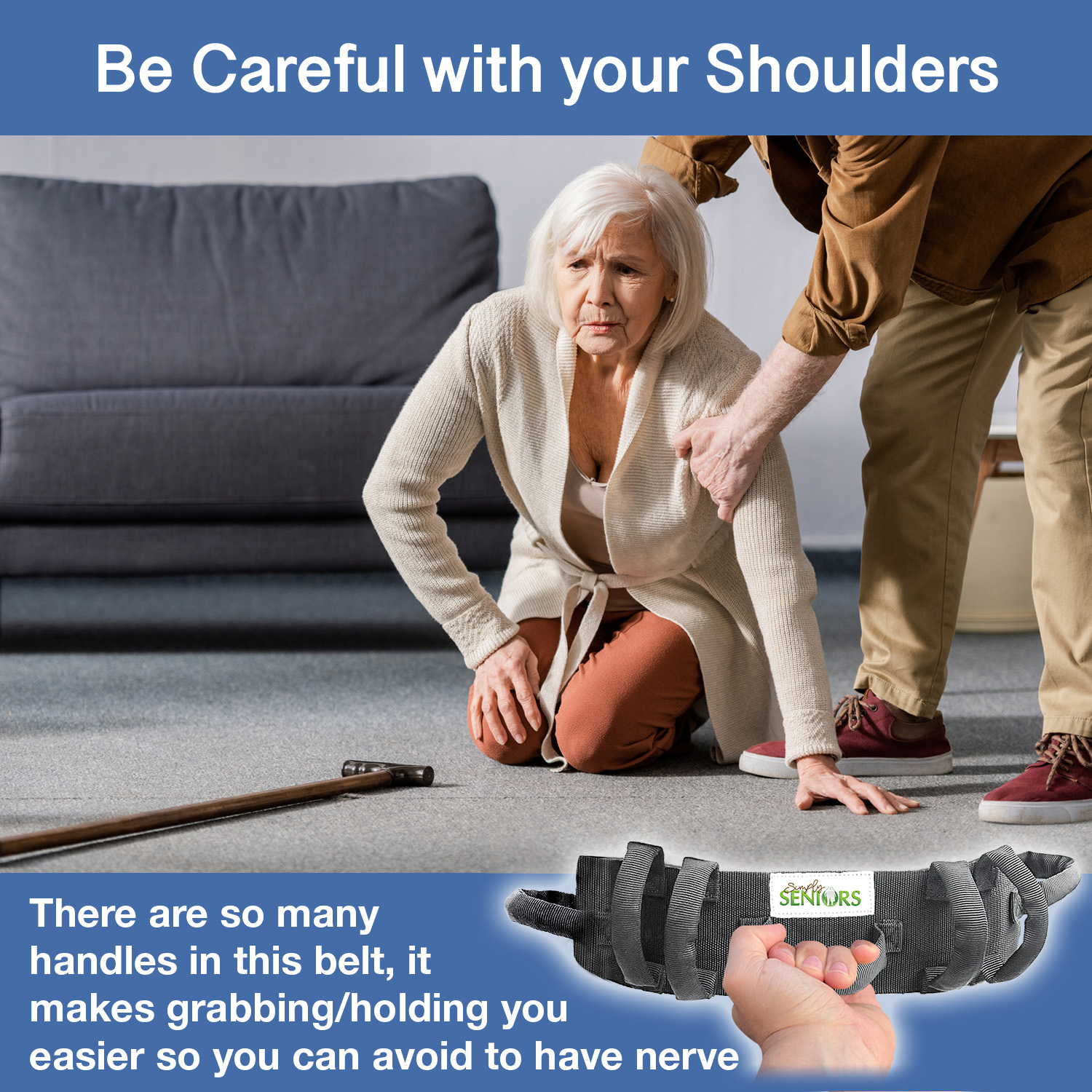
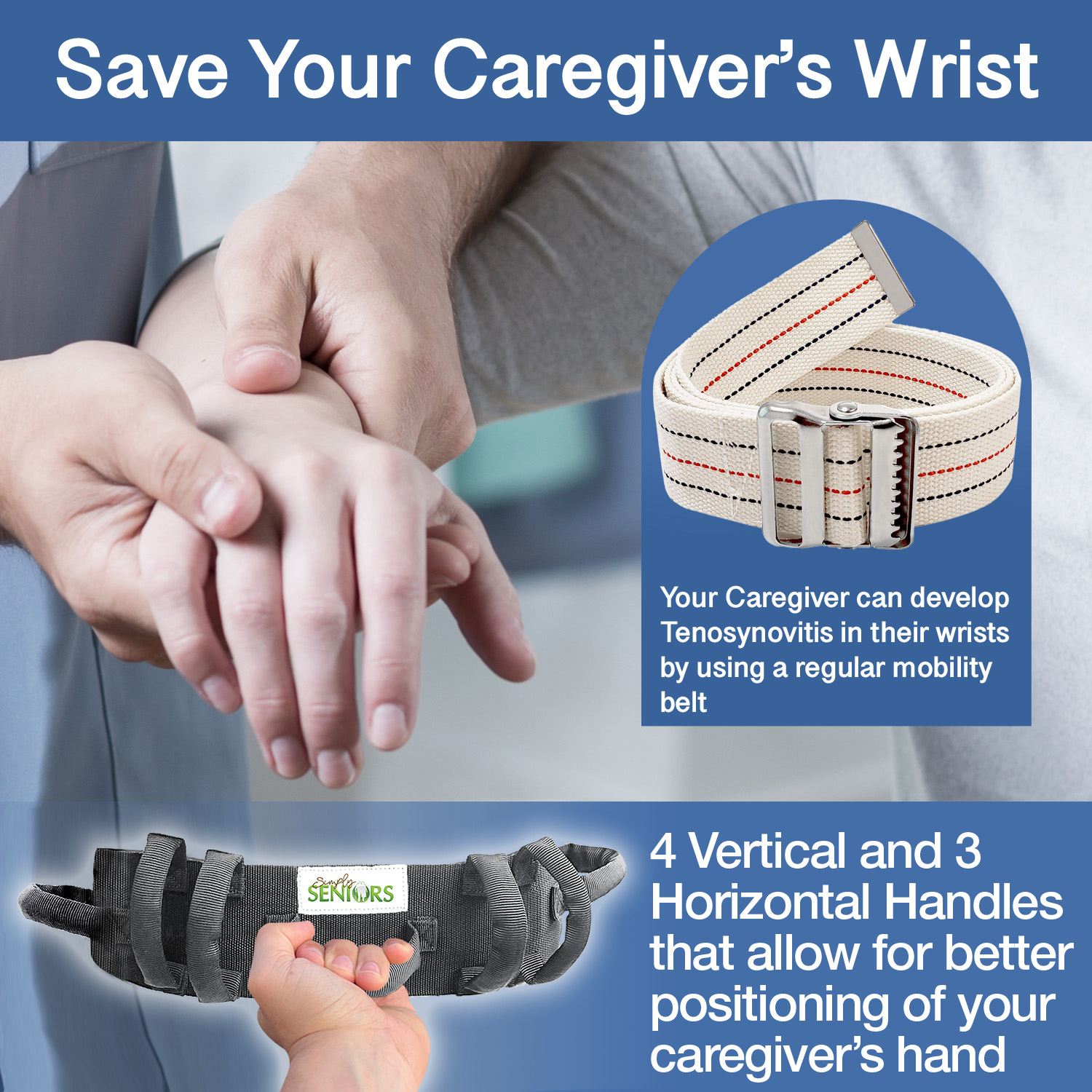
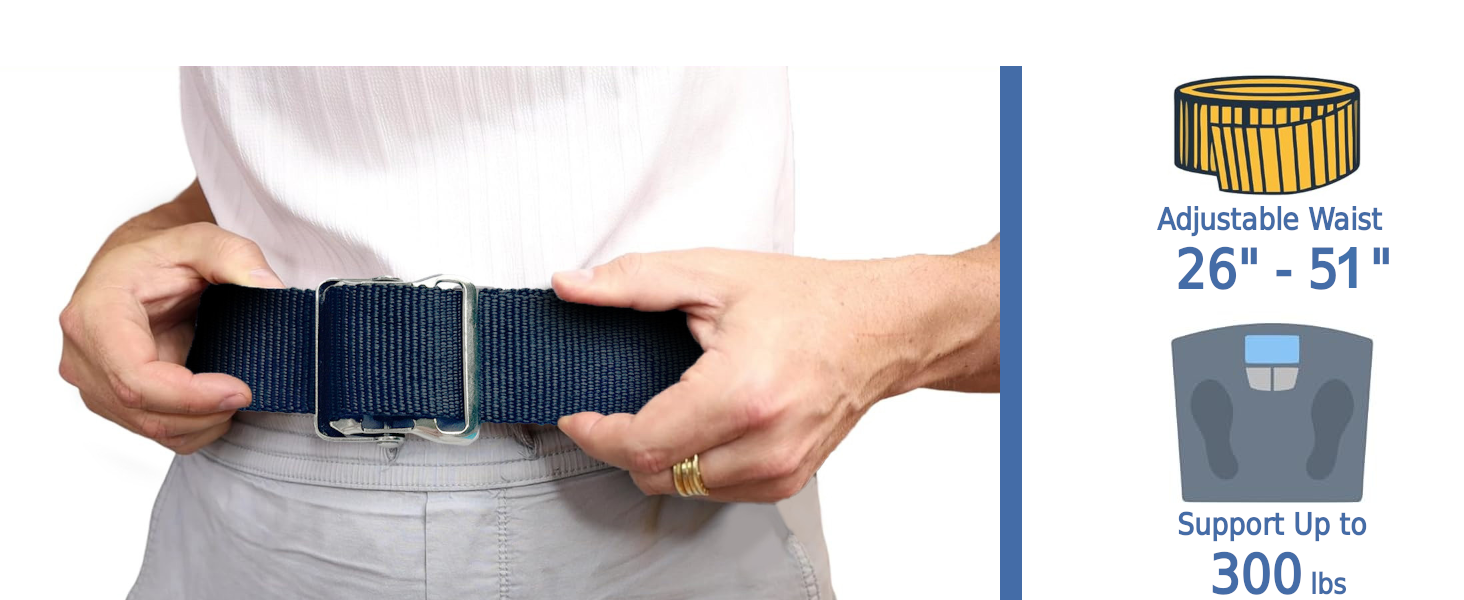
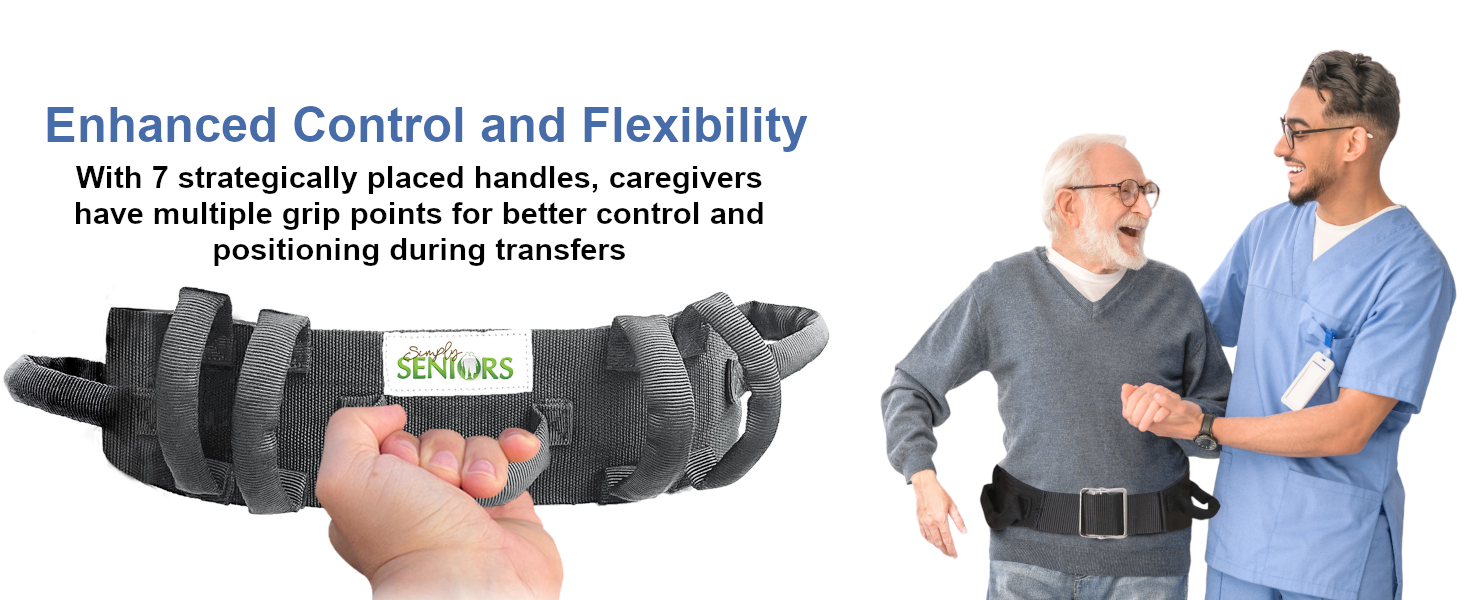
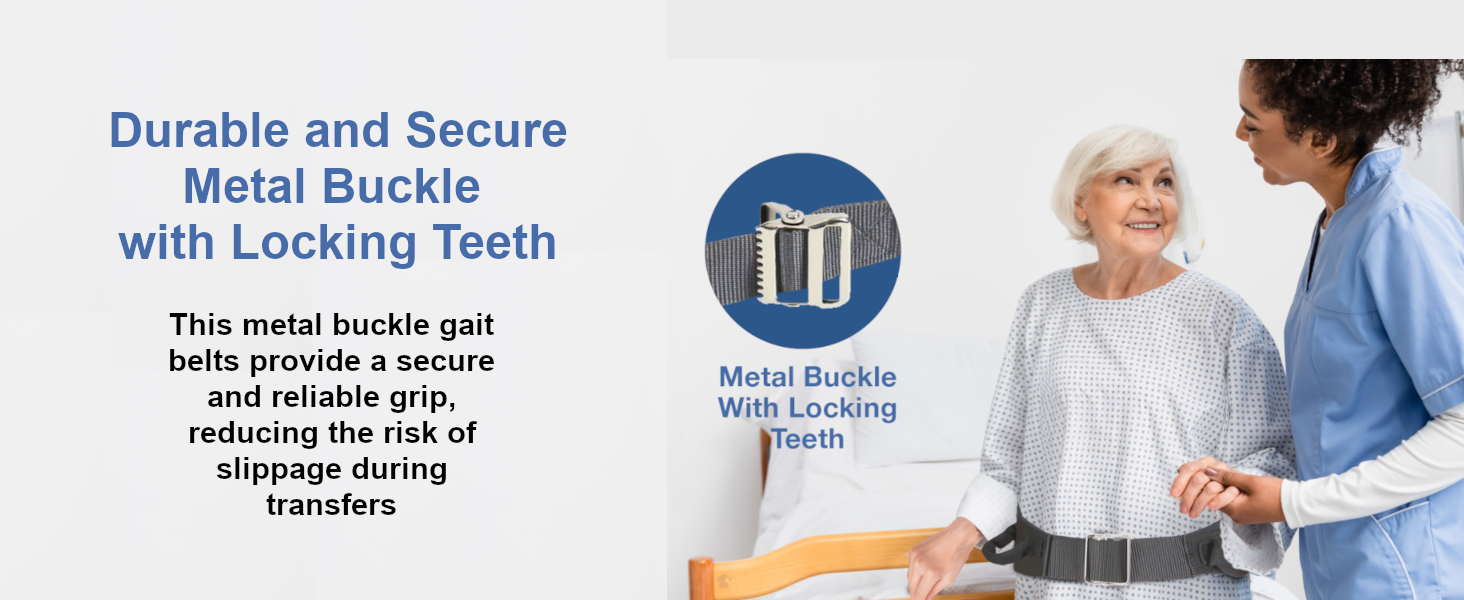
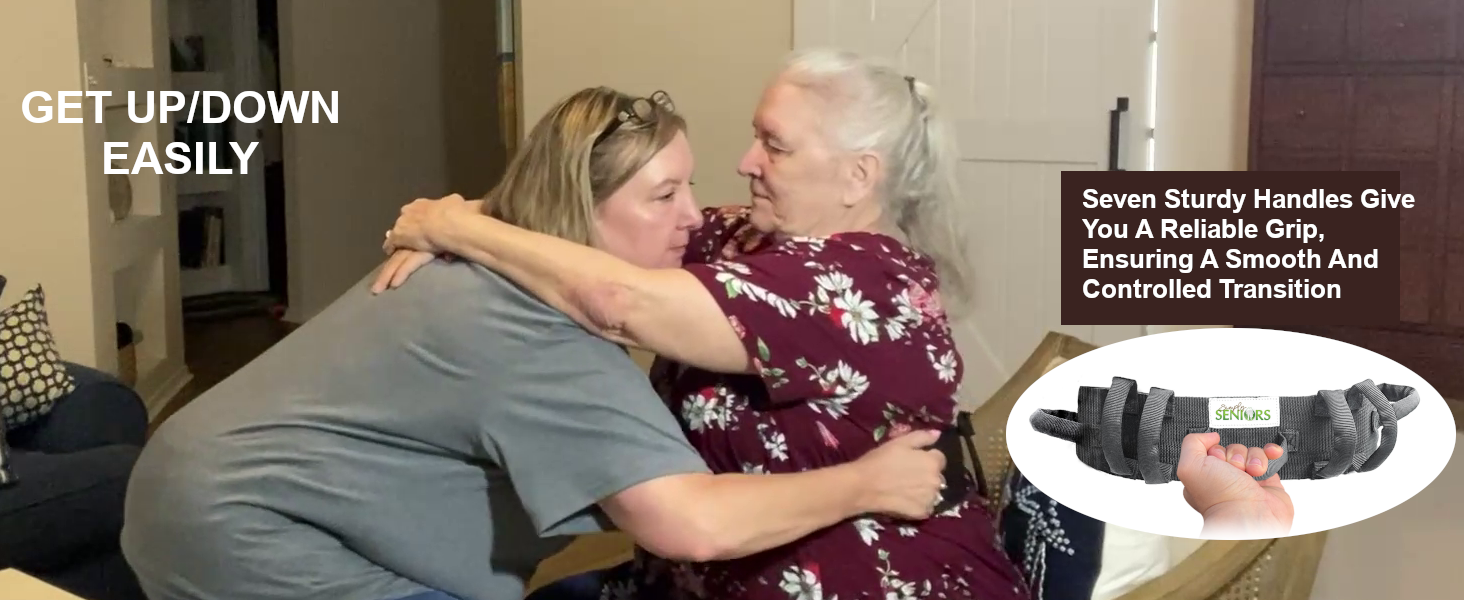
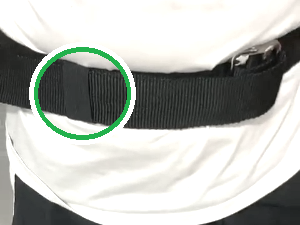

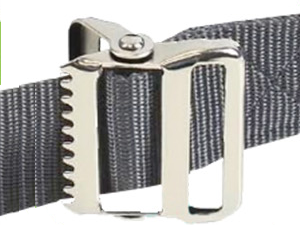
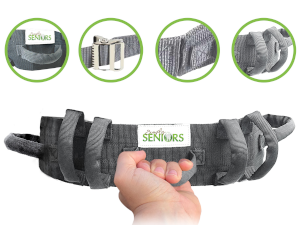
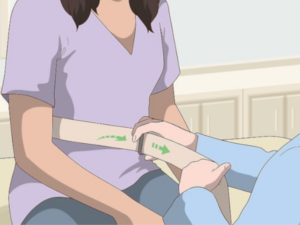
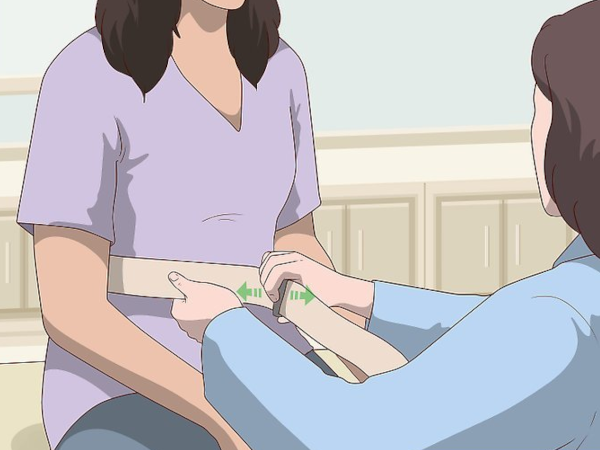
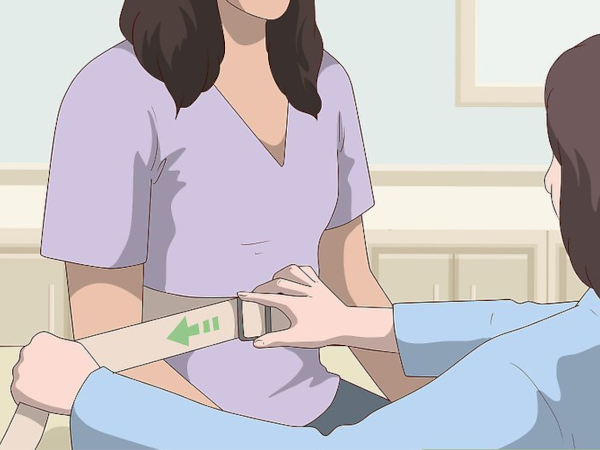
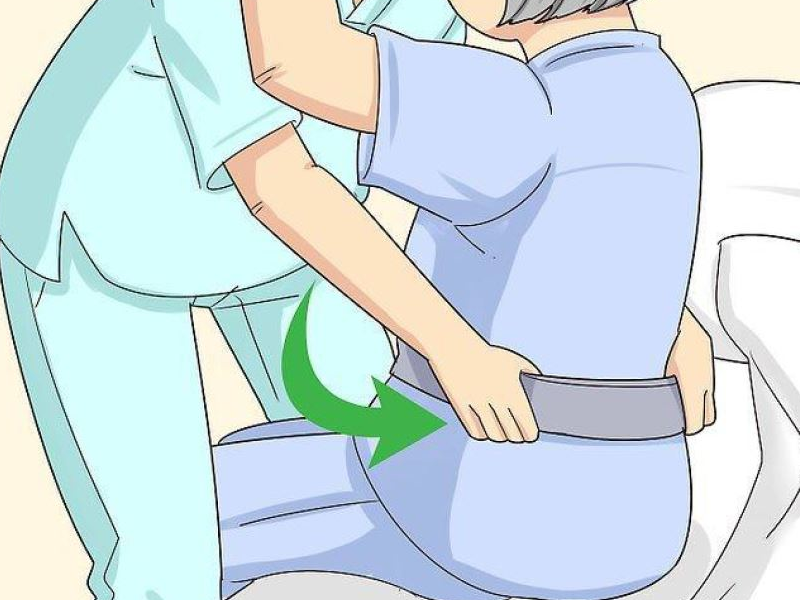
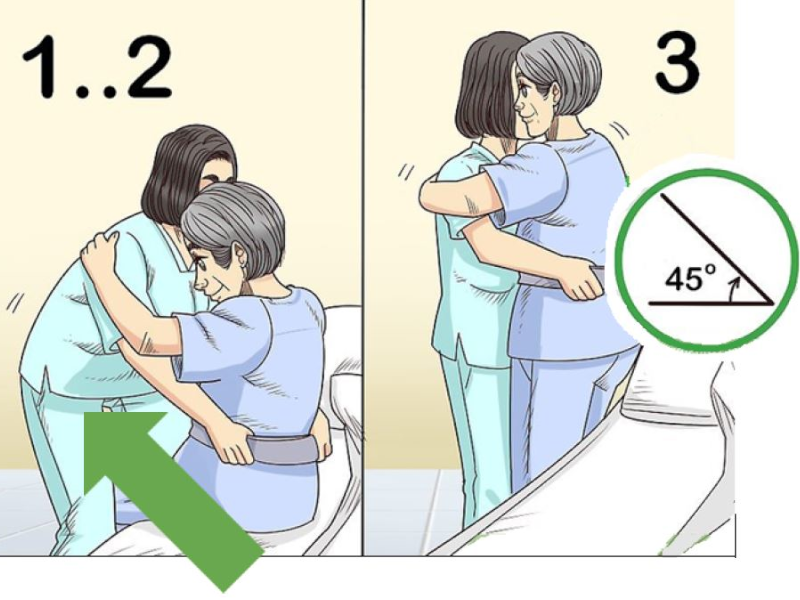




Jat –
Safe
Really safe and helpful to get my husband and stabilize him.
2 people found this helpful
M. I. Lopez –
Just a snap and it’s ready
This is the third one I’ve bought. I buy this for my family members that need one. I have one for both my mom and dad. It’s so much easier to have the handles.
Big Bob –
STRONG BELT
Works wonderful & is Very Strong
2 people found this helpful
Christine Krouse –
great
This item is great. Very helpful.
One person found this helpful
maria –
Helps elderly to stay steady.
Peace of mind, able to assist elderly with transfers and keep from falling.
Gerard Lobo –
Good gait belt
Item works as described. The various handles provide different types of support.
Roy Murphy –
Works great
My 96 year old mother needs a little help standing. This belt helps a lot. I like the grips on the back and side
Becky –
Provides safe assistance
Shipped quickly. Product description is accurate. Love the multiple handles and the placement of them. Have only used it a few days. So far, it’s been super helpful and much easier to assist my husband.
One person found this helpful
maryann sandoval –
easy to use
high quality product
Daney –
I wish we hadn’t needed this …
… just 4 hours after it arrived. But when the fall took place — it did the trick! Really glad I ordered.
California reading –
Great device
This gait belt is so helpful with transfers for my husband with mobility issues.
One person found this helpful
captain_red_dog –
Works Great
Works Great
Roberta Corrin –
This is a game changer
I bought this gait belt after my mom’s first hospital stay. This gait belt is very easy to use. Because of the various handles and their placement on the belt, it makes it easy to assist whether someone is standing up from a sitting position if you need to help steady them when they’re walking. As a matter of fact, my mother had it on the one time that she fell And the firefighters used it to help stand her up when they came they said they needed to get one for the rig. This is definitely something you should add to your tool kit if you have a loved one that you’re caring for at home.
2 people found this helpful
Amazon Customer –
Does what it’s supposed to
Comfortable to wear and comfortable for the assistant. Keeps us but safe, and that’s what it’s for
yitsang –
Very easy to use, and helpful
it is very easy to use and very helpful
One person found this helpful
Tommie T. Wall –
Great belt-very sturdy!
This item came wonderfully packaged and I was surprise how sturdy it is built! Thank you for a well-built and constructed item!
One person found this helpful
Debra –
Good quality
Product seems to work as it should
La Toya and Xela –
Very helpful.
Very thought out product. My dad feels really comfortable uaing it.
3 people found this helpful
lisa hahn –
Might save a trip to the hospital.
This thing is amazing! My husband fell, and it took my son and i 30 minutes to get him up. He was bruised and his skin was torn from our help. I found this belt, and the next time he fell we had him up in seconds with no pain or injuries. Now we put it on before dangerous moves and we’re avoiding falls altogether. I love this belt!
5 people found this helpful
Gloria Johnston –
Awesome Product!
Product is just as advertised! This is an awesome product with the handles on it for better grip.
christena hicks –
Comfortable Gait belt
I have MS and using this gait has been a pleasant help. If I loose my balance my caregiver can easily guide me.
Amazon Customer –
Amazing!
This belt makes it so easy to hold onto someone who doesn’t walk well. It gives me a sense of security!
Ruben Vital –
durabilty
it is still working
One person found this helpful
Janet –
Life saver
Purchased for a friend, with elderly person in home. Belt is a life saver when person cannot get back on their feet without assistance. Would suggest to anyone with family/friends with mobility issues.
2 people found this helpful
Melissa –
Great belt and very happy with purchase
Don’t look any further if you’re looking for a gait belt. Handles make it safer for both patient and care giver. Super sturdy and easy on and off. The extra handles have already come in handy and has stopped several falls.The only belt we will ever use for the seniors in the house
2 people found this helpful
Melissa –
Great belt and very happy with purchase
Don’t look any further if you’re looking for a gait belt. Handles make it safer for both patient and care giver. Super sturdy and easy on and off. The extra handles have already come in handy and has stopped several falls.The only belt we will ever use for the seniors in the house
2 people found this helpful
Estre –
Quality materials
Item as described.
Lil F –
BEST BELT
My husband fell and spent a few weeks in the hospital. This belt make me feel confident in helping him get up and down from chairs and the one step in out house. He hasn’t complained about it not be comfortable so I know just how tight to make it and where to place it while using it.
Cheryl A Gibson –
Great product
This product is great for easy buckling and the handles are great for support. The construction is excellent and the price is fair.
2 people found this helpful
customer –
Product was exactly as shown.
excellent product. excellent service
2 people found this helpful
silvia elias –
Works Well
Use this belt for an elderly relative who is unsteady on her feet. Has four handles on every side to hold the patient.
2 people found this helpful
BM –
Easy on wrists
As it describes in the description, traditional gait belts are stress on the caregiver’s wrist. The handles in the horizontal and vertical position make it easy to grip in any position and help with less strain.
2 people found this helpful
Victoria –
Util
Utiles para movilizar adultos mayores
Cynthia Davis –
Safety grip belt.
The material very durable and grips are easy to hold on and balance the person.
David HODGE –
great lifting device
this was just what we were looking for to help handle my disabled mother inlaw without hurting so much.THANK YOU!!!!
Ronald C. Grant –
Better Than Expected!!!!
Makes picking up my daughter so much easier and safer. She feels safer using this belt.
One person found this helpful
Nana Rexanne –
Works great in rehab therapy
Suggested by therapists and used in PT and OT therapy. Perfect for assisting patients with balance and lift. Easy to adjust for proper fit.
KS15 –
HANDLES ARE EVERYTHING
Transferring my grandfather became increasingly difficult as his illness progressed. Being that I am not a health care professional with a ton of experience in transfers, these handles were SO needed. If you are caretaking for someone who struggles to stand, you need this. For real. It provides security for him and for all of us! I am so glad we had this until he was unable to be transferred any longer.
2 people found this helpful
KS15 –
HANDLES ARE EVERYTHING
Transferring my grandfather became increasingly difficult as his illness progressed. Being that I am not a health care professional with a ton of experience in transfers, these handles were SO needed. If you are caretaking for someone who struggles to stand, you need this. For real. It provides security for him and for all of us! I am so glad we had this until he was unable to be transferred any longer.
2 people found this helpful
cath –
Very reliable belt
Belt is very good for what it is intended for
One person found this helpful
cath –
Very reliable belt
Belt is very good for what it is intended for
One person found this helpful
KP –
Easy to use and adjust for waist size.
It is a great product for helping an individual get off a bedside commode when their legs or arms may not be strong enough for independent standing. The handles around the back provide a firm grip to assist to stand.
One person found this helpful
Amazon Customer –
Made lifting so much easier
My friend fell. The family picked her up off the floor using the handles on the gait belt. Her arms and legs were too weak to be of assistance.
CB –
Great
Works for easy transport. Much better than single strap.
One person found this helpful
ItzMe_D –
Exceptional Gait Belt
Great Gait Belt ! Has enough handles and provides fantastic stability for both patient and caregiver
One person found this helpful
Kindle Customer –
Glad I bought it
I use this belt to help keep my husband who has Late stage Parkinson’s disease steady when walking ! I have also used it to help lift him after a fall , it has been well worth the money and I’m very glad I bought it!
Anjounette –
Great for use with someone with a SCI
Bought this to use on my friend who has a SCI to help with Car Transfers. Works really well.
Christina A. Delzenero –
It isn’t just for seniors!
After passing out and my partner having to sprint to catch me before I hit the ground, we realized I needed a way to be lowered safely to the ground. I bought the gait belt for seniors (*ahem* I am 44) and it was perfect. It fits beautifully, it isn’t uncomfortable, and it has handles on both sides so my partner could easily deposit me on the ground when I was feeling faint.
One person found this helpful
deep thinker –
Several of Mom’s caregivers love it!
They like the handles on the belt. I think it is easier on their hands.
3 people found this helpful
Gene –
Safety
Looks like this belt is well made.
Linda Jordan –
Great and sturdy product.
I like the quality of product.
One person found this helpful
Carol Miller –
Must have!
This is a must have for anyone who works with an elderly person or has an elderly person in the home
2 people found this helpful
Darode –
Aide pour relever mon mari qui fait des chutes
Denise Lemmon –
Belt
Returbed
Pamela –
Excellent Gait Belt
Sturdy fabric, easy clasp, & nice handles to assist with walking & transfers of memory care resident with Parkinson’s!
3 people found this helpful
E. P. –
Useful for helping on transfers
Helpful with an elderly relative with disabled mobility, to help to hold them on stairs and getting into vehicles.Well made, sturdy
2 people found this helpful